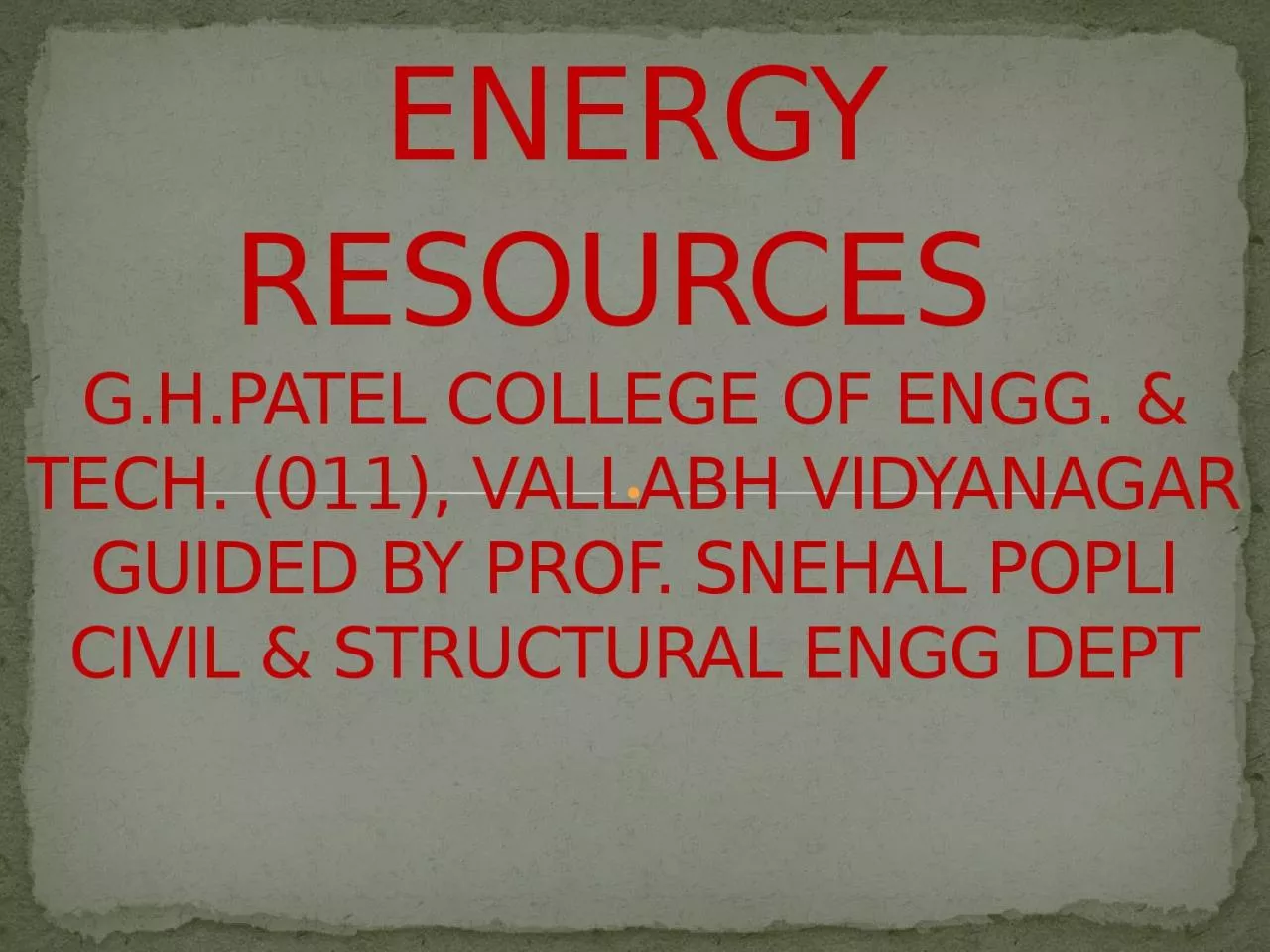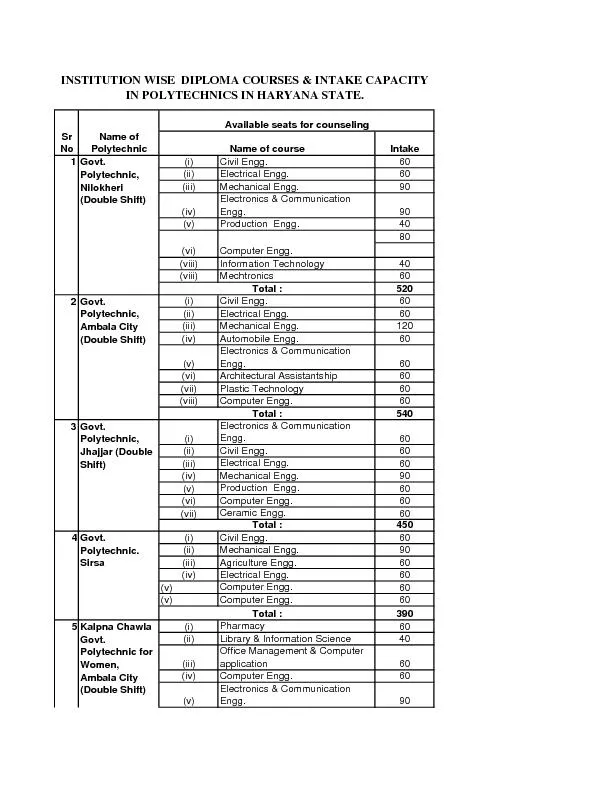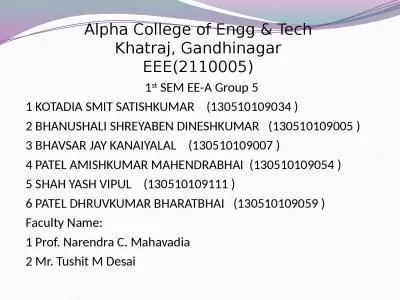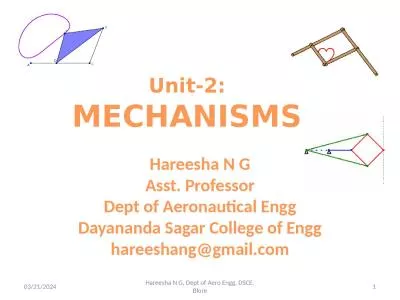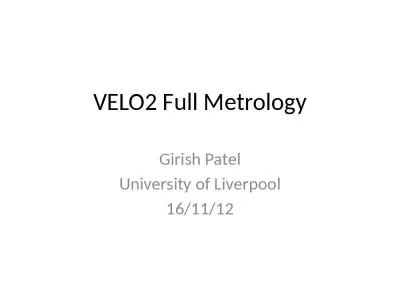PPT-ENERGY RESOURCES G.H.PATEL COLLEGE OF ENGG. & TECH. (011), VALLABH VIDYANAGAR
Author : ariel | Published Date : 2023-10-28
GUIDED BY PROF SNEHAL POPLI CIVIL amp STRUCTURAL ENGG DEPT 29 YASH DALAL 130110119011 VINAY SUDANI 130110119056 ARUN PATEL 130110119035 PARIMAL PATEL 130110119041
Presentation Embed Code
Download Presentation
Download Presentation The PPT/PDF document "ENERGY RESOURCES G.H.PATEL COLLEGE OF ..." is the property of its rightful owner. Permission is granted to download and print the materials on this website for personal, non-commercial use only, and to display it on your personal computer provided you do not modify the materials and that you retain all copyright notices contained in the materials. By downloading content from our website, you accept the terms of this agreement.
ENERGY RESOURCES G.H.PATEL COLLEGE OF ENGG. & TECH. (011), VALLABH VIDYANAGAR: Transcript
Download Rules Of Document
"ENERGY RESOURCES G.H.PATEL COLLEGE OF ENGG. & TECH. (011), VALLABH VIDYANAGAR"The content belongs to its owner. You may download and print it for personal use, without modification, and keep all copyright notices. By downloading, you agree to these terms.
Related Documents

